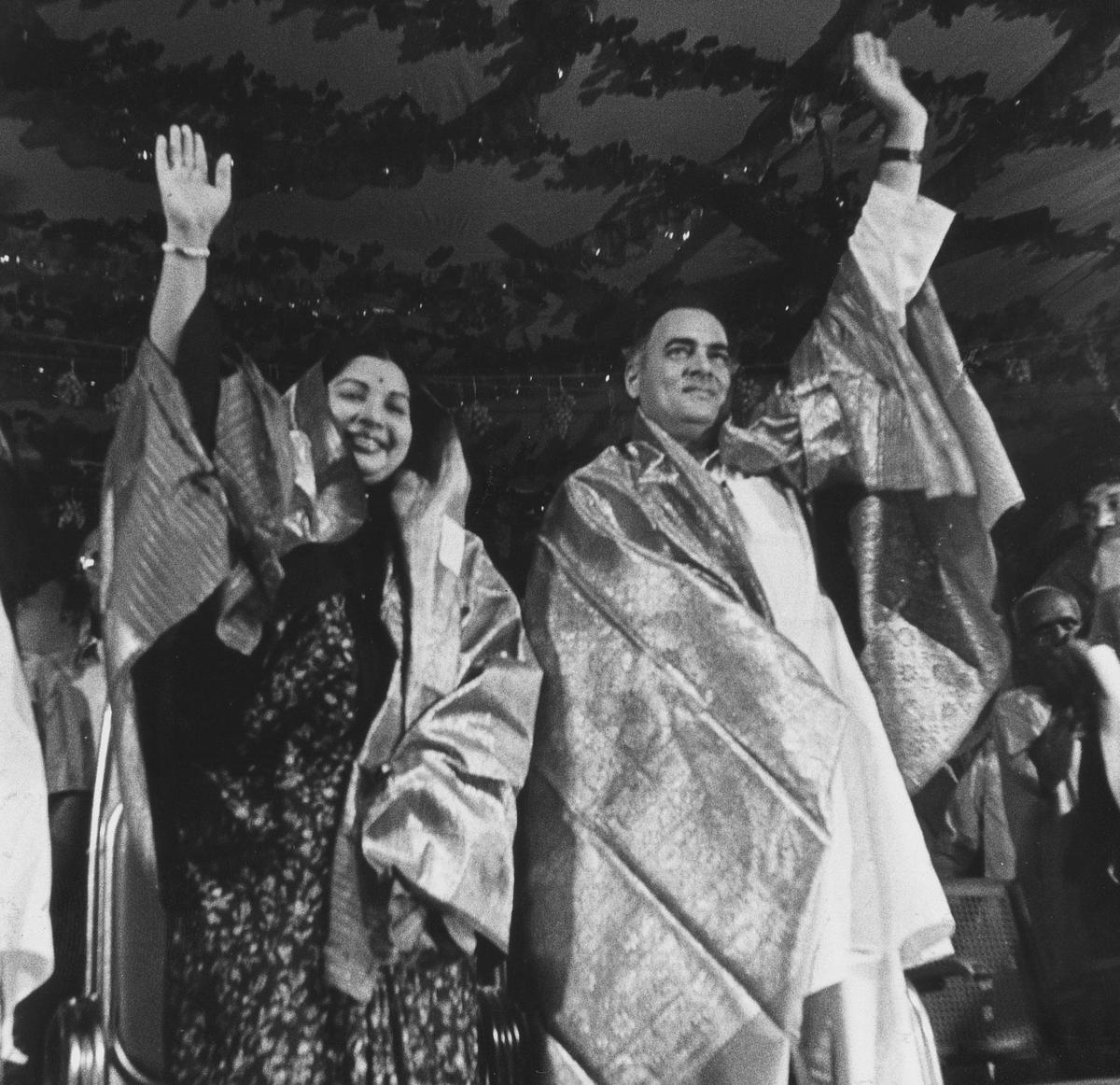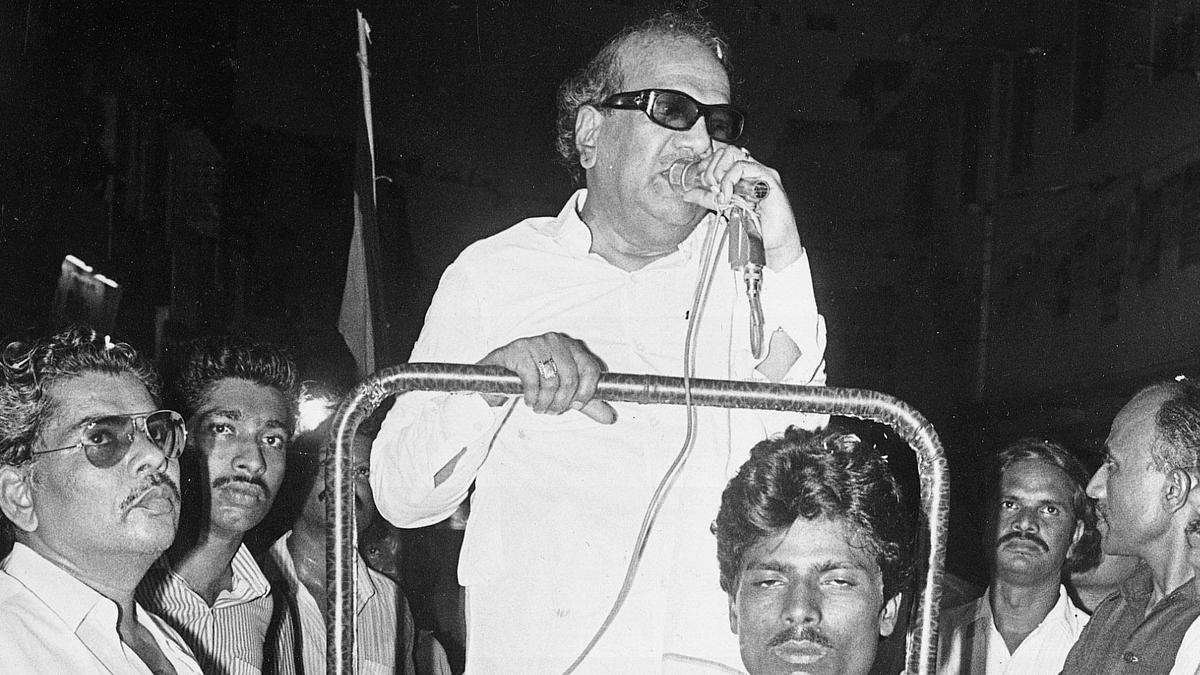Unaware of Tamil Nadu going to be the site of the gruesome assassination of former Prime Minister Rajiv Gandhi along with 15 others at Sriperumbudur on May 21 in 1991, the State, till then, witnessed the run-up to the elections to the Lok Sabha and State Assembly in a manner no different from the previous occasions. Originally, May 26, 1991 was fixed as the date of polling in the State. But, it was postponed to June 15 in the wake of the assassination.
In tune with the State’s characteristic, the poll campaign then too reached feverish pitch with leaders from various parts of the country descending and local leaders launching an all-out effort to sway the voters. Public and street corner meetings were all going on, as usual, with major political parties keeping the cadres in good humour – which meant providing them food, funds, and liquor in many cases.
According to an estimate put out by The Hindu in a report on May 12, 1991, a candidate for the Assembly seat would have to cough up between ₹6 lakh and ₹10 lakh, depending on the composition and spread of the constituency, while a Lok Sabha candidate may have to find anything from ₹25 lakh to ₹30 lakh. “Perhaps the parties may be in a position to offer 20 per cent of this, the rest depends on the influence and resourcefulness of the contestants,” it stated.
Snap elections
Both the Lok Sabha and the Assembly had faced snap polls. The ninth Lok Sabha, which was formed on December 2, 1989, was to last till December 1994 but was dissolved on March 13, 1991. Likewise, the ninth Legislative Assembly, which was constituted on February 6, 1989, was dissolved on January 30, 1991. The Dravida Munnetra Kazhagam (DMK)’s council of Ministers, led by M. Karunanidhi, was removed by the Union government, which was then headed by Chandra Shekhar, who, in turn, depended on the Congress and the All India Anna Dravida Munnetra Kazhagam (AIADMK) for support in the Lok Sabha. Tamil Nadu came under the President’s rule for the fourth time in its history which remains the last such instance.
Then President of India R. Venkataraman (right) with the then Chief Minister of Tamil Nadu M. Karunanidhi (left) at Madras in December 1990
| Photo Credit:
The Hindu Archives
As the then President R. Venkataraman had approved the Union Cabinet’s proposal for the proclamation of the President’s rule, the DMK still holds a grudge against him. Venkataraman died in January 2009. On his decision, Venkataraman, in his memoir, My Presidential Years, justified it by saying the office of President was not an “appellate or supervisory” authority over that of Prime Minister. “It was my duty to act on the advice of the Cabinet so long as the proposed action was not violative of provisions of the Constitution,” Venkataraman pointed out.
The dismissal of the DMK regime was more controversial than any other similar operation because the then Governor of Tamil Nadu, S.S. Barnala, had refused to send a report to the Centre recommending imposition of President’s rule in the State under Article 356, as dictated by the Centre. For this, Venkataraman’s explanation was that it was “beyond dispute” that the Union government could act on the basis of a report of Governor or otherwise. So, the absence of the Governor’s report was “not an infirmity,” the former President stated, recalling that in 1977, the Janata government at the Centre dismissed the councils of Ministers in nine States without reports of the Governors concerned.
As was the norm since the 1977 Lok Sabha and Assembly elections in Tamil Nadu, the formations led by the DMK and the AIADMK were the principal players. The Pattali Makkal Katchi (PMK) contested on its own in 1991. While the DMK-led coalition included the Janata Dal and two Left parties; the AIADMK had the Congress, the United Communist Party of India (UCPI), the Republican Party of India, Forward Bloc, Farmers Toilers party and the Human Rights Party as its allies. The DMK contested in 171 Assembly seats and the AIADMK in 164.

J. Jayalalithaa and Rajiv Gandhi at a public meeting in Madras on April 18, 1991
| Photo Credit:
The Hindu Archives
Right from the word go, the AIADMK-led alliance was tipped to win the Assembly polls. This was no surprise, as even in the November 1989 Lok Sabha elections, the coalition won in all but 39 constituencies, the exception being Nagapattinam. It was ahead of its principal adversary and others in 227 Assembly segments and the DMK-headed front, six seats, with the PMK surging to the front position in one segment – Taramangalam of Salem district.
Opinion polls too favoured the AIADMK-Congress combine, which was headed by J. Jayalalithaa then. An early public opinion survey commissioned by Frontline, a sister publication of The Hindu, in three Assembly constituencies in Madras (now Chennai) revealed a 7 percentage point lead for the AIADMK-Congress (I) front over the DMK-led front. Carried out by the Apt Research Group during April 5-7, 1991, the “early days” survey revealed that the AIADMK-Congress alliance’s vote share was 45.9% against the DMK-led front’s 38.72%. A month later, The Hindu-MARG conducted an opinion poll in Tamil Nadu which showed the alliance was more or less in the same commanding position as in November 1989 when it won a massive victory.
It was against this backdrop that the DMK president and former Chief Minister Karunanidhi stunned political observers by his statement, during his campaign in Coimbatore district on May 15, that “if we win, we will follow the path of Anna [DMK founder and former Chief Minister C.N. Annadurai] and if defeated, we will go the Periyar [Dravida Kazhagam founder E.V. Ramasamy] way.”
A news report published by this newspaper on May 16, 1991, stated the remark had created “some confusion.” He was quick to clarify later in the day that by the term ‘Anna way,’ he meant that the DMK would form the government, and “not to contest in elections” was what he meant by the term “Periyar way.” Even this clarification did not satisfy many and a spokesman of the Dravidian major had to say later that the stand of the DMK would be known after the results were announced.
R. Kannan, the biographer of Annadurai and M.G. Ramachandran and the author of The DMK Years, explains the DMK was founded for the express purpose of fighting elections. “This was the only reason Anna and others left Periyar,” he adds.
Elaborating, he says Periyar’s way is to go back to the basics, “an impossibility in electoral politics. Electoral politics entails endless compromise and accommodation.”
He also recalls how Karunanidhi, in August 1983, immediately after the anti-Tamil pogrom in Sri Lanka, made an offer that his party would not make an attempt at power and the Congress could rule the State for 10 years, if the Centre — which was led by Prime Minister Indira Gandhi — sent troops to the neighbouring country.
Karunanidhi himself laid to rest the row that surrounded his observation on “Anna way-Periyar way” at a public meeting in Madurai in June 1991. “He always wanted to work like Periyar and would always follow the path shown by Anna, Periyar and the Justice Party,” The Hindu on reported on June 9, 1991.
Unsurprisingly, the 1991 Assembly election’s results were one-sided with the AIADMK-Congress combine bagging 225 Assembly seats. Karunanidhi was the lone DMK candidate to win from Harbour. He later resigned and in the bye-elections to Harbour and Egmore constituencies (which were earlier countermanded), the DMK candidates emerged victorious.

